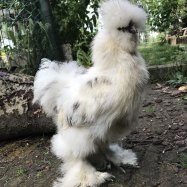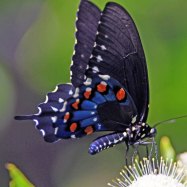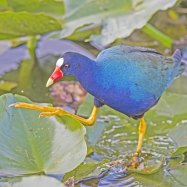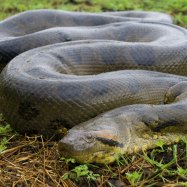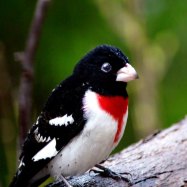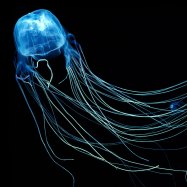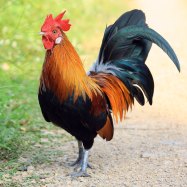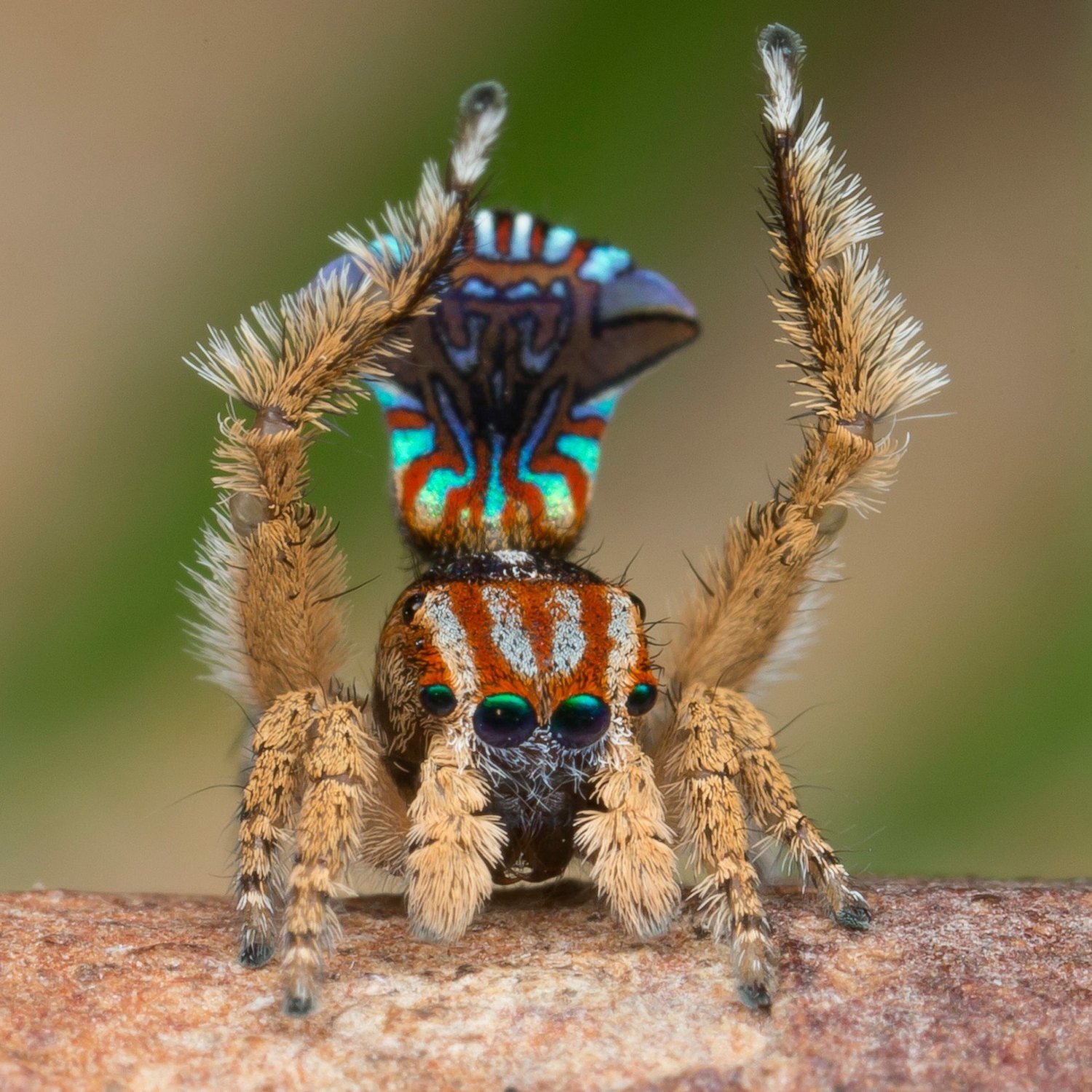
Peacock Spider
Less than 4 millimeters
The Peacock Spider, found in eastern and southern Australia, is a small and compact Salticidae family member. At less than 4 millimeters in length, it may be tiny but its colorful display during courtship is truly a sight to behold! #PeacockSpider #Australia #Salticidae
Animal Details Summary:
Common Name: Peacock Spider
Kingdom: Animalia
Habitat: Grasslands, forests, and scrublands
The Astonishing Maratus Peacock Spider: A Colorful Marvel of Australian Arachnids
Hidden amongst the tall grasses and dense forests of eastern and southern Australia, a tiny creature mesmerizes with its brilliant colors and intricate dance moves. Meet the Maratus peacock spider, also known as the peacock spider, a member of the Salticidae family and a truly wondrous creature.Before we dive into the fascinating world of this tiny arachnid, let's take a closer look at its scientific classification. The Maratus peacock spider belongs to the Animalia kingdom, and it is a member of the Arthropoda phylum, which includes all invertebrate animals with segmented bodies and jointed limbs Peacock Spider. It also falls under the class Arachnida, which includes spiders, scorpions, and ticks. Within the Arachnida class, the Maratus peacock spider belongs to the Araneae order, which includes all spiders.
The Maratus peacock spider is widely known for its striking appearance, which has earned it the common name "peacock spider." Its vibrant and colorful body is a result of careful sexual selection, where the females choose their mates based on their elaborate displays. The males are surprisingly small, with a body length of less than four millimeters, making them one of the tiniest spiders in the world. Despite their small size, their appearance is one that certainly cannot be missed.
The male Maratus peacock spider's body shape is small and compact, with eight spiny legs that allow it to move quickly and agilely. Their long, slender legs help them to effectively hunt and capture their prey, and their eyesight is incredibly keen, enabling them to track their victims with ease. As carnivorous creatures, the Maratus peacock spiders feed on a variety of insects, including flies and other spiders Puff Adder.
The Maratus peacock spider's habitat includes grasslands, forests, and scrublands, where they can find a steady supply of food and shelter. Despite their tiny size, they have adapted well to their environment and are well-equipped to survive in the harsh conditions of the Australian landscape. They are primarily found in eastern and southern Australia, and they are considered endemic to the continent.
One of the most fascinating aspects of the Maratus peacock spider is its geographical distribution, which is limited to Australia. It is an incredible feat that such a tiny creature has managed to captivate worldwide attention with its intricate dance and vibrant colors from such a small area. This has made the Maratus peacock spider a source of national pride for Australians, and it has become an iconic representation of their fauna.
But what truly sets the Maratus peacock spider apart from other spiders is its incredible display of courtship. When the mating season arrives, the male spider transforms into a magnificent performer, showcasing its colorful abdomen flap and dancing in front of the female spider. The spider's dance is a complex and precise ritual, involving intricate movements and rhythmic vibrations. This display is crucial for attracting a female mate and securing their place in the next generation.
The male's colorful abdomen flap, which is known as an opisthosomal fan, is responsible for its striking appearance. This flap contains vibrant colors such as red, blue, yellow, and orange, which the male spider can use to dazzle and impress their potential mates. This is also the reason behind the spider's common name "peacock spider," a nod to the similarly flamboyant bird.
Apart from its captivating visual display, the Maratus peacock spider has also attracted attention for its exceptional body movements during courtship. As they dance, the males rhythmically vibrate their legs and flap their abdomens, creating a symphony of colors and movements that can rival any professional dancer. The precise movements of the courtship dance are a testament to the spider's excellent motor control, and it's no wonder that these creatures have become a popular subject for study by scientists.
Their intricate displays, vibrant colors, and incredibly complex courtship dance have made the Maratus peacock spider a beloved creature, especially in the world of social media. Photos and videos of their displays have gone viral, and enthusiasts and scientists alike have dedicated countless hours to studying these tiny creatures. Every year, new discoveries are made about their behavior, anatomy, and even the different species of Maratus peacock spiders that exist.
However, despite their widespread popularity, the Maratus peacock spider has also raised concerns about its conservation. With their limited geographical distribution and increasing deforestation and urbanization in Australia, there is a genuine fear that these marvelous creatures could be in danger of becoming endangered. Fortunately, the Australian government has taken steps to protect and preserve the habitats of these tiny but essential creatures, ensuring that future generations can still marvel at their beauty.
In conclusion, the Maratus peacock spider is a marvel of the natural world, a tiny creature that has captured the hearts and attention of people worldwide. Its brilliant colors, intricate dance moves, and unique courtship ritual make it an exceptional creature, and one that teaches us about the wonders of the animal kingdom. Its remarkable nature, combined with the efforts to protect its existence, will surely ensure that the Maratus peacock spider continues to enchant and inspire generations to come. So, if you ever find yourself strolling through the Australian grasslands, keep your eyes peeled, because you never know when you might catch a glimpse of this incredible arachnid.

Peacock Spider
Animal Details Peacock Spider - Scientific Name: Maratus
- Category: Animals P
- Scientific Name: Maratus
- Common Name: Peacock Spider
- Kingdom: Animalia
- Phylum: Arthropoda
- Class: Arachnida
- Order: Araneae
- Family: Salticidae
- Habitat: Grasslands, forests, and scrublands
- Feeding Method: Carnivorous
- Geographical Distribution: Australia
- Country of Origin: Australia
- Location: Eastern and southern Australia
- Animal Coloration: Vibrant and colorful
- Body Shape: Small and compact
- Length: Less than 4 millimeters
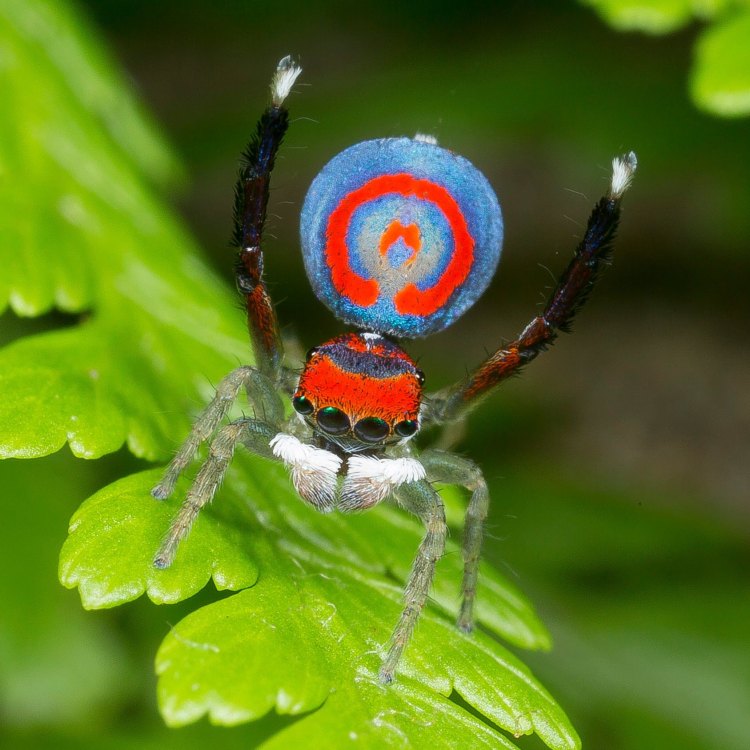
Peacock Spider
- Adult Size: Less than 4 millimeters
- Average Lifespan: Approximately 1 year
- Reproduction: Sexual
- Reproductive Behavior: Males perform elaborate courtship dances
- Sound or Call: No
- Migration Pattern: No
- Social Groups: Solitary
- Behavior: Active during the day
- Threats: Habitat loss, climate change
- Conservation Status: Not evaluated
- Impact on Ecosystem: Important for ecosystem balance
- Human Use: None
- Distinctive Features: Brightly colored abdominal flaps
- Interesting Facts: Males have unique and intricate mating displays
- Predator: Birds, larger spiders
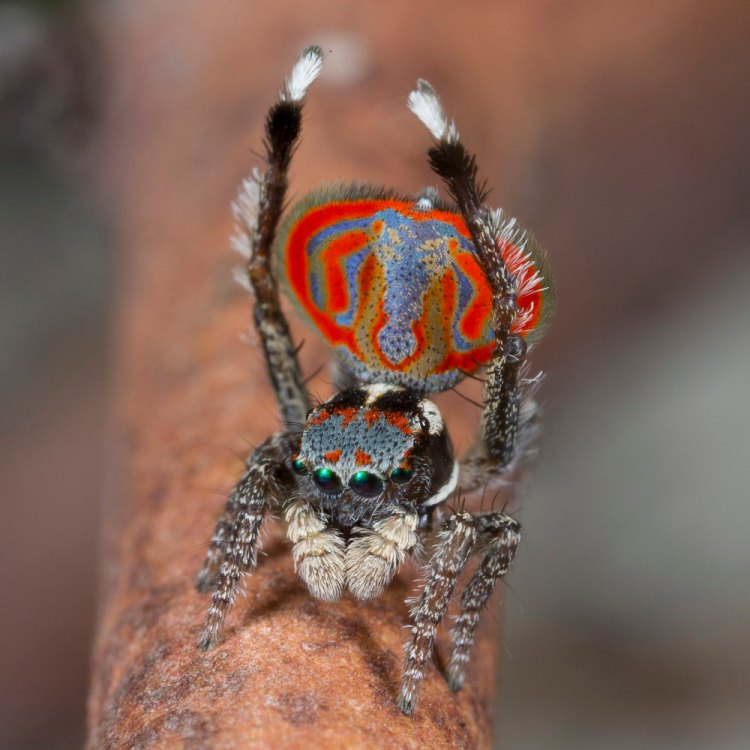
Maratus
A Peek into the Mesmerizing World of Peacock Spiders
When we think of spiders, we often picture creepy, eight-legged creatures that give us the heebie-jeebies. However, not all spiders fit this stereotype. Some are surprisingly cute, colorful, and even entertaining. One such spider species that is sure to capture your attention and leave you in awe is the peacock spider PeaceOfAnimals.Com.From their unique behaviors and stunning appearances to their important role in the ecosystem, peacock spiders have a remarkable story to tell. In this article, we will take a closer look into the mesmerizing world of peacock spiders and discover what makes them stand out from other spider species.
Size and Lifespan
Peacock spiders, also known as Maratus, are a group of small spiders found in Australia. These tiny arachnids measure less than 4 millimeters in size, making them one of the smallest spider species in the world. To put this into perspective, they are even smaller than a pea!Despite their small size, peacock spiders have an average lifespan of approximately 1 year. However, this can vary depending on their environment and availability of resources. This may seem short, but for such a small creature, it is considered a decent lifespan.
Reproduction and Mating Behavior
Like most spiders, peacock spiders reproduce sexually. However, what sets them apart is their unique and elaborate mating displays Paddlefish. Male peacock spiders have evolved to perform intricate dance routines as part of their courtship process.These dances involve them lifting their colorful abdominal flaps, also known as "fan blades," and moving their legs in a synchronized and rhythmic manner. This display is meant to attract females and to show off their vibrant colors and patterns. Each male has a unique and specific dance, and they are not afraid to show off their moves to win over a potential mate.
Interestingly, these dances are not just for show. They serve as a way for males to communicate and demonstrate their suitability as a mate. If the female is impressed by the male's performance, they will mate, and the dance will continue during the mating process.
Migratory and Social Behavior
Unlike many other spider species, peacock spiders are solitary creatures. They do not form social groups or colonies and prefer to live and hunt alone. As for their migratory behavior, peacock spiders do not migrate, and they typically stay in their home range for their entire lifespan.However, some scientists have observed that peacock spiders may engage in short-distance movements to find new habitats or suitable mates. This behavior is not considered true migration, but more of a temporary relocation.
Active During the Day and Threats They Face
Peacock spiders are diurnal, which means they are active during the day and rest at night. This is another unique trait, as most spider species are nocturnal. Their active nature during the day makes them easier to spot and observe in their natural habitats.However, despite being active during the day, peacock spiders still face several threats. These tiny arachnids are sensitive to habitat loss and climate change, making them vulnerable to extinction. Their natural habitats are being destroyed due to human activities, such as deforestation and urbanization.
The rise in global temperatures also affects their natural environment, making it difficult for them to survive. As a result, peacock spiders are currently not evaluated for conservation status. But their importance in the ecosystem cannot be ignored.
Impact on the Ecosystem and Human Use
Peacock spiders may be small, but they play a vital role in maintaining the balance of their ecosystem. As predators, they help control the population of their prey, which includes small insects and other spiders. This is crucial in keeping the food chain in check and preventing overpopulation of certain species.In addition, peacock spiders also serve as prey for other animals, such as birds and larger spiders. This not only contributes to the natural food chain but also helps maintain the balance of predator-prey relationships.
As for human use, peacock spiders do not have any known practical use. However, their unique and mesmerizing appearance has caught the attention of scientists, researchers, and even photographers, who study their behaviors and capture their beauty through stunning photographs and videos.
Distinctive Features and Interesting Facts
One of the most distinctive features of peacock spiders is their brightly colored abdominal flaps. These flaps are used during their courtship displays and are what give them their name. The male's flaps are often adorned with striking patterns and colors, making them appear like miniature peacocks.Apart from their distinct coloring and dancing skills, there are several interesting facts about peacock spiders that make them stand out from other spider species. For instance, each male peacock spider has its own unique and intricate dance routine, making them one of the only known animals to have a personality.
In addition, these tiny creatures have excellent vision, despite their small size. They are able to accurately judge distance and size, which is crucial in performing their elaborate courtship dances. This makes them one of the few spider species with such advanced visual skills.
Predators of Peacock Spiders
As mentioned earlier, peacock spiders have natural predators, including birds and larger spiders. The flashy and colorful display of their abdominal flaps, which is used to attract females, also makes them more visible to these predators. This puts them at risk of being consumed by their natural predators.However, peacock spiders have evolved a defense mechanism to protect themselves. When threatened, they quickly curl up into a ball and tuck their colorful flaps away. This makes them less visible and less appealing to predators, increasing their chances of survival.
The Fascinating World of Peacock Spiders
In conclusion, peacock spiders are much more than just tiny creatures with colorful flaps and intricate dance routines. They possess unique and fascinating characteristics that make them stand out from other spider species.From their important role in the ecosystem to their impressive mating displays, these tiny creatures have captured the attention of scientists and nature enthusiasts worldwide. However, their survival is currently threatened by human activities and climate change, highlighting the need for conservation efforts to protect these mesmerizing creatures.
Next time you come across a spider, take a closer look. It might just be a peacock spider, ready to showcase its remarkable abilities and beauty.
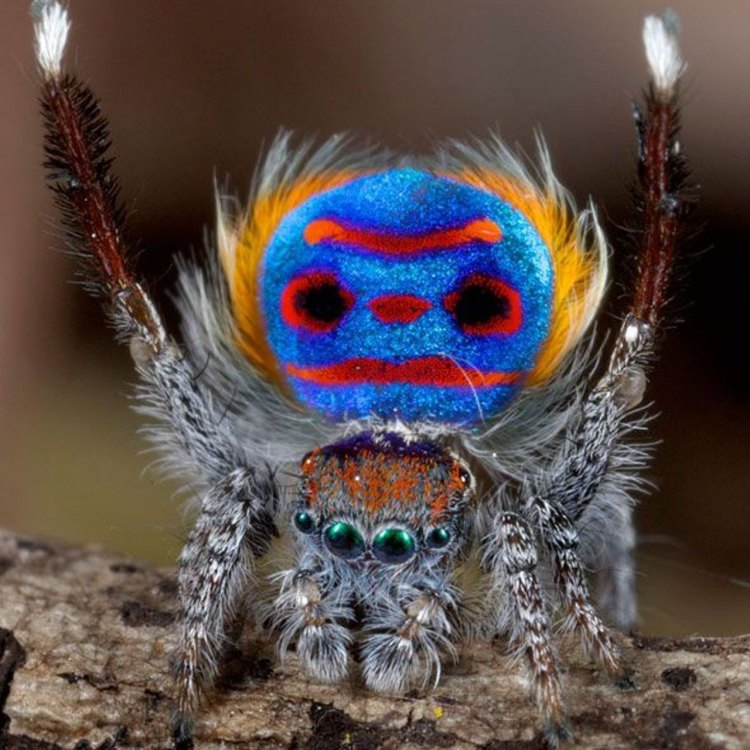
The Astonishing Maratus Peacock Spider: A Colorful Marvel of Australian Arachnids
Disclaimer: The content provided is for informational purposes only. We cannot guarantee the accuracy of the information on this page 100%. All information provided here may change without prior notice.

